Play a shadow game with Venus before the Moon returns on April 24th.
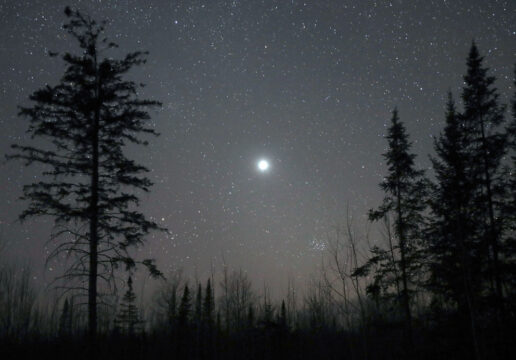
Bob King
Venus has been a powerful presence at dusk for months — bright enough to cast shadows. How would you like to put it to the test? The Moon won't spoil the darkness until at least April 24th — April 25th if you wait till after moonset — making it the perfect time to see your own shadow by the light of another celestial body.
To make a successful shadow sighting you'll need two things. First, a reasonably dark viewing site without direct artificial lighting. Your window of shadow-casting begins at the end of evening twilight — about 2 hours after sunset — and ends shortly before Venus sets around 11:30 p.m. (a little earlier or later depending on your location). Second, you'll need something white against which to project your shadow. A large piece of posterboard duct-taped to a car window works well. You can also use a white bedsheet draped over the top of your car and held in place with a couple of boots or other household items.
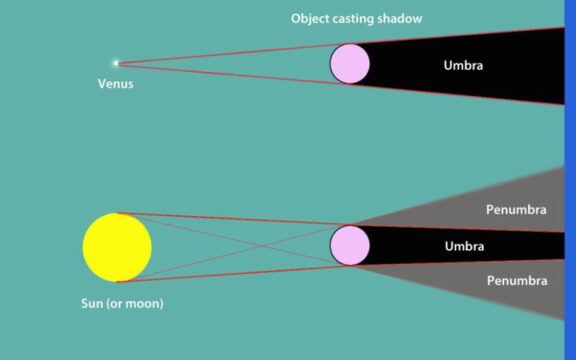
Bob King
For shadow-casting purposes, Venus acts more like a point source of light, like a star, compared to more extended sources such as the Sun or Moon. Each object casts a different shadow. Observe your own shadow stretching across the street the next sunny day, and you’ll notice that it has a soft, diffuse border. Your body blocks part of the Sun but not all of it. Light from the sun's periphery spills into your shadow and softens and grays its borders, creating a partial shadow or penumbra.
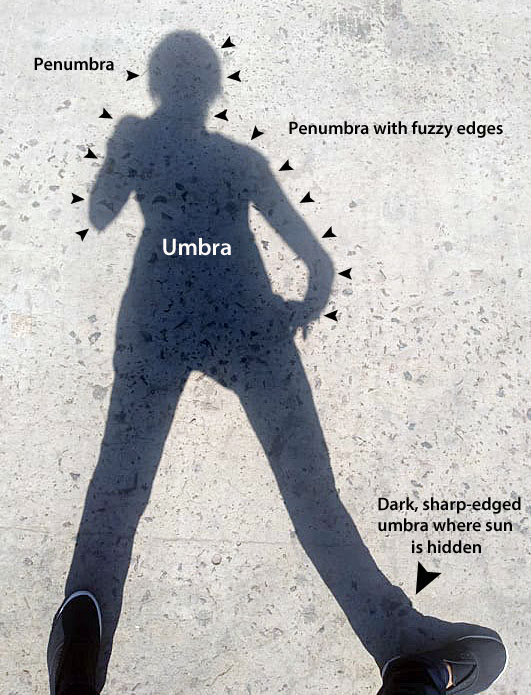
Piqui Díaz
At foot level the penumbra is absent, or nearly so, because the distance between the shadow and your shoe is mere inches, making your shoe very effective at blocking the entire Sun. But as the distance increases between your body and its shadow, less of the Sun is blocked and more light filters around the edges. In exactly the same way, Earth's penumbral shadow expands the further behind the planet you go.
Venus is different. Your body either blocks it 100% or it doesn’t. There’s no “spill” around the edges like with the Sun. That’s why Venus shadows appear laser-crisp. Think of the Sun as hundreds of point sources, each casting its own narrow beam. When all these point-source shadows overlap, there will be total darkness (the shadow’s umbra) surrounded by a lighter penumbra where only some of the individual shadows overlap.
Shadow Play
Armed with bedsheets and posterboards, I drove to a reasonably dark site in my quest for Venusian silhouettes and photographic evidence. First, I set up a "studio" (above). I taped the posterboard to the Venus-facing side of my car and placed a vase and a wooden "X" on a stepladder.
Next, I took photos of the two objects casting shadows onto the board. Once my eyes were fully dark-adapted I spread out the bedsheet and stood with my back to the planet. Sure enough, there it was — I could see my shadow! Because the rods of our eyes — the light-sensing cells responsible for seeing at night — are good at detecting motion, my silhouette was easier to see if I swayed from side to side.
Playing around, I discovered that if I pivoted at a right angle to Venus — with the planet off to one side as I faced either north or south — and extended my arm in front of the sheet, the shadow became much more conspicuous. Later, for comparison, I photographed the same items in full sunlight to demonstrate the difference in the quality of the shadows.

Bob King
Find a dark place the next clear night and see for yourself. To photograph your shadow, set the ISO to 8000 and expose wide open (full aperture at f/2.8 or f/4) for 20 to 30 seconds. To focus in the dark, tape a piece of dark paper to the bedsheet or posterboard and temporarily place your lens on the AF, or autofocus, setting. Shine a bright flashlight onto the sheet or board and include the piece of paper so that there's contrast in the field of view for the camera to catch focus. Switch the lens back to M (manual) and take the picture. And remember — when Venus is high shadows fall closer to the ground; when low, they stand higher up on your shadow-catcher.
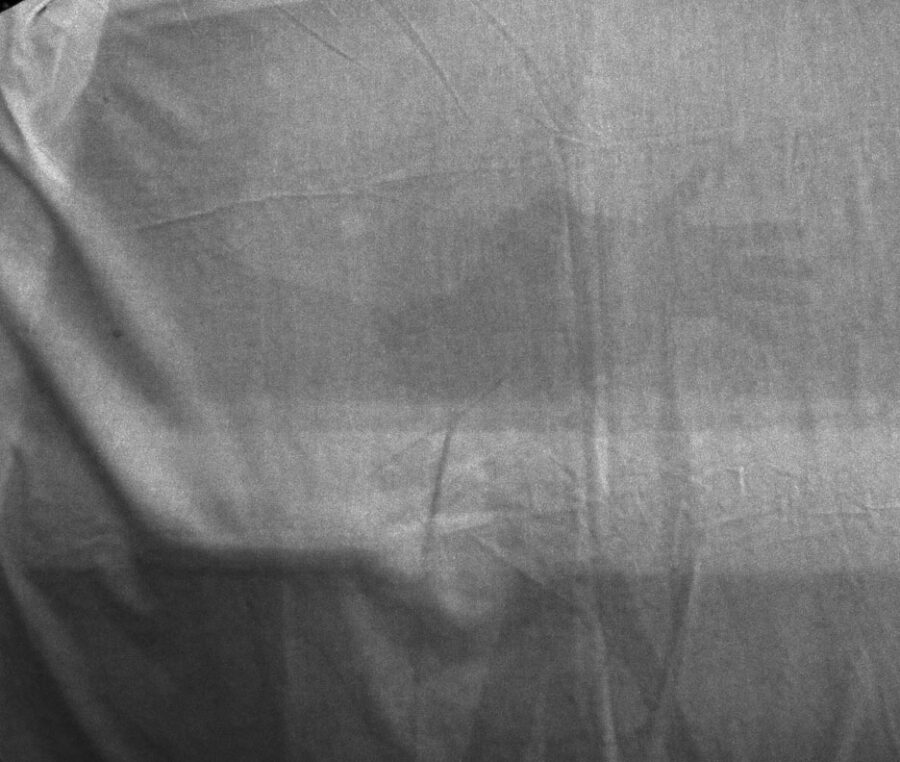
Bob King
On the evening of April 25th the crescent Moon will shine at magnitude –7.9 some 10° below Venus shining at magnitude –4.7. I wonder if it might be possible to photograph the shadows of both offset from one another? A mind-bending challenge!
 13
13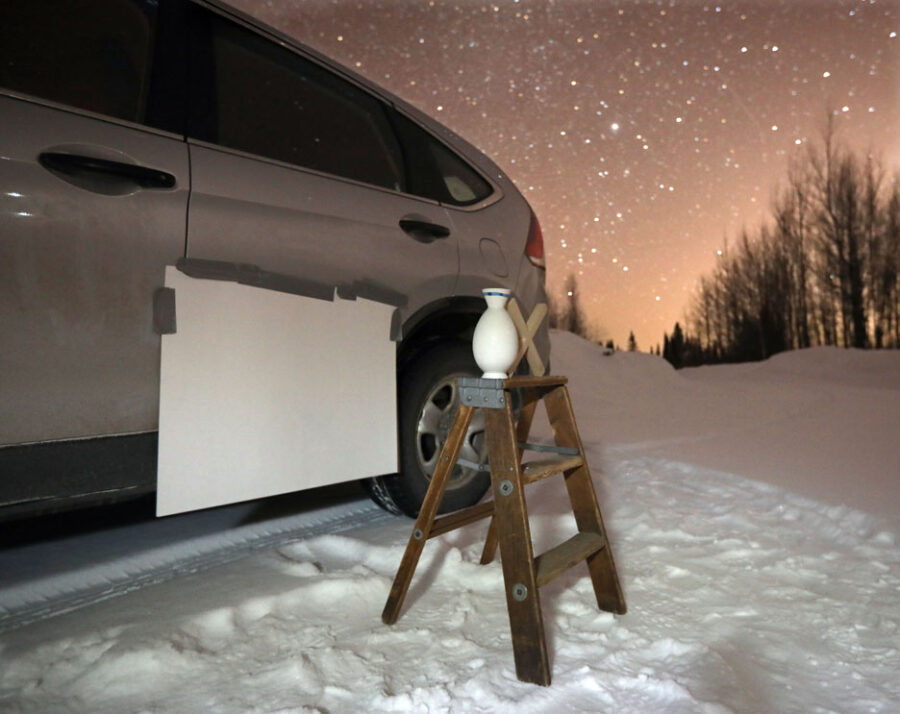










Comments
Anthony Barreiro
April 16, 2020 at 7:04 pm
That's interesting! People have made photograms of shadows on photographic paper by sunlight and moonlight. I wonder if Venus' light would be bright enough to expose a photogram.
You must be logged in to post a comment.
Bob KingPost Author
April 17, 2020 at 3:22 pm
Anthony,
THAT'S a great question. I wish I had some photo paper handy to try it. I suspect "yes".
You must be logged in to post a comment.
Anthony Barreiro
April 17, 2020 at 5:40 pm
My friend Michael Starkman is an old school black and white film photographer with a darkroom in his basement. Unfortunately photo paper is becoming increasingly hard to find. Most of the factories have shut down.
Here are some of Michael's photos:
http://michaelstarkman.com/sacredgrove
You must be logged in to post a comment.
James-Watts
April 17, 2020 at 4:16 pm
Venus was so bright a couple of evenings ago that we were able to see our shadows while walking by the sea here in England! That was only about 90 mins after sunset too so not even fully nighttime!
You must be logged in to post a comment.
Eric Rachut
April 17, 2020 at 9:40 pm
Thank you, Bob, for a great article! And the black and white photos from Michael Starkman show that B & W can be more aesthetic than color - thanks for those, too.
You must be logged in to post a comment.
Bob KingPost Author
April 19, 2020 at 12:27 am
Hi Eric,
You're welcome! I started in B&W and have a special fondness for it. Nice photos!
You must be logged in to post a comment.
Anthony Barreiro
April 19, 2020 at 6:40 pm
Thanks Bob. Michael is a great photographer.
You must be logged in to post a comment.
Henrik
April 18, 2020 at 5:56 pm
As said before, great story. Thanks!
One night in February '82 or '83 i was in a remote location in Sweden, far from city lights. I was walking along the road, it was so dark I could just see enough to follow the road between the snowbanks. Suddenly I realised that there was a shadow. Turning around I realised that Venus was behind me and casting a shadow of me.
I had read about Venus casting a shadow, this is the only time I have seen it. To get a first-hand experience of these unusual phenomena is always fascinating.
Henrik
You must be logged in to post a comment.
Bob KingPost Author
April 19, 2020 at 12:29 am
Henrik,
Great story — what a surprise that must have been. I hope you are fortunate enough to see it again.
You must be logged in to post a comment.
Scott
April 19, 2020 at 5:12 pm
question: how close does Venus skirt the N edge of the sun this conjunction? if this conjunction occurred just a week later, we'd see a transit! so how close does Venus get to the sun this time 'round?........ 🙂
You must be logged in to post a comment.
Bob KingPost Author
April 19, 2020 at 5:40 pm
Hey Scott,
The center of Venus will pass about 13 arc minutes north of the Sun during inferior conjunction on June 3.
You must be logged in to post a comment.
Anthony Barreiro
April 19, 2020 at 6:42 pm
Close only counts in horseshoes and hand grenades. 😉
You must be logged in to post a comment.
Bob KingPost Author
April 19, 2020 at 8:11 pm
Anthony,
Thanks for the chuckle. Hadn't heard the hand grenade variation.
You must be logged in to post a comment.
You must be logged in to post a comment.